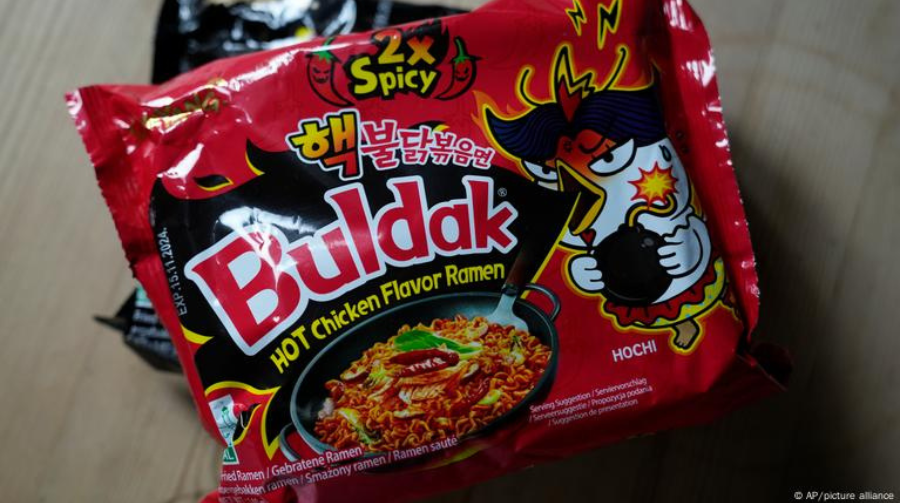Health & Wellness
Instant Ramen Cancer Warning: What You Need to Know About the Viral Packet Label
“WARNING: Cancer and Reproductive Harm” — this tiny line on the back of a popular ramen packet has sent the internet into a spiral. But is your snack really dangerous?
The Video That Went Viral
Late June 2025: A TikTok and Instagram reel showing the back of a Buldak spicy ramen packet gained millions of views. The label, which reads:
“WARNING: Cancer and Reproductive Harm
was enough to send shockwaves through social media.
Many viewers expressed disbelief: Why has no one told us this before?”
“I’ve been eating ramen for years—what does this mean
It sparked concerns among students, office-goers, foodies, and even influencers who frequently promote these noodles as spicy food challenges.
But what’s the real story?

What is Prop 65?
The warning is a result of California Proposition 65, also called the Safe Drinking Water and Toxic Enforcement Act of 1986.
Prop 65 requires businesses to disclose if their product contains any of the over 900 listed chemicals that are known to cause cancer or reproductive harm in any detectable quantity, even if the exposure risk is extremely low.
This is important: the presence of the label doesn’t mean the product is unsafe or illegal. It means the manufacturer is choosing to comply with California’s unique laws, which are stricter than federal or international standards.
Why Is Ramen Labeled With a Cancer Warning?
There are several possible reasons why your favorite ramen brand might carry the Prop 65 warning:
Chemical Residue in Packaging
Many packaged foods use inks, adhesives, and plastic films in their packaging that may contain trace amounts of phthalates, styrene, or acrylamide — all of which are on California’s Prop 65 list.
These substances can potentially migrate into the food, especially when heated (microwaving is common for instant noodles).
Flavor Enhancers and Additives
Artificial flavoring agents like monosodium glutamate (MSG) and disodium inosinate are widely debated. Some of these additives are not directly on the Prop 65 list but may contribute to chemical reactions during cooking that release trace compounds.
Cooking Oil Contaminants
Many instant noodles are pre-fried in palm or vegetable oil before packaging. During high-heat frying, compounds like acrylamide (a known carcinogen when consumed in large quantities) can form.
Preservatives Like TBHQ
Tertiary Butylhydroquinone (TBHQ) is commonly used to extend shelf life. While approved by the FDA in limited quantities, it is still a Prop 65-listed chemical due to potential long-term health concerns in higher exposures.
Does This Mean Ramen Causes Cancer?
No. A Prop 65 label does not mean the product will cause cancer — only that it contains chemicals that may increase risk with long-term or excessive exposure.
California’s Prop 65 is notorious for being overcautious. Common items with Prop 65 warnings include:
- Coffee
- Toothpaste
- Bluetooth earphones
- Vinyl handbags
- French fries
So, your ramen isn’t in any special danger zone—it’s just complying with California’s labeling law.
What’s the Real Health Concern With Instant Noodles?
Even beyond chemical warnings, nutritionists have been warning against regular ramen consumption for years. Why?
Extremely High in Sodium
One pack of instant noodles may contain 1,600 mg or more of sodium, which is 70–90% of your recommended daily limit. High sodium intake is directly linked to high blood pressure, heart disease, and stroke.
High in Saturated Fats
Instant noodles are pre-fried. A single pack can contain 5–7 grams of saturated fat, which raises cholesterol levels and increases cardiovascular risks.
Contains Additives and Preservatives
Common ingredients like TBHQ, MSG, and color additives (like Red 40, Yellow 6) may be tolerated in small doses, but are not ideal for daily intake.
Low in Nutritional Value
Ramen lacks fiber, protein, and vitamins—it provides calories without meaningful nourishment.
So Should You Stop Eating Ramen?
No—but treat ramen as a sometimes food, not a meal plan.
Here’s how to enjoy your spicy favorite responsibly:
Add real vegetables
Spinach, broccoli, carrots, or even frozen peas boost nutrition and fiber.
Use half the seasoning packet
Most sodium is in the “magic powder”. Using less can cut salt intake by 40–60%.
Add eggs or lean meat
Boiled eggs or grilled chicken add protein, helping make the meal more filling and nutritious.
Rinse noodles before cooking
This can remove some surface oil and chemicals used during pre-frying.
Try air-dried or whole grain ramen
Several brands now offer non-fried, low-sodium, or organic alternatives.